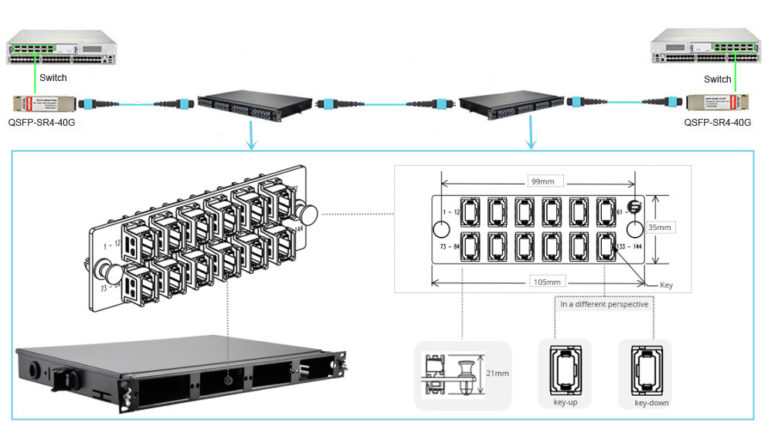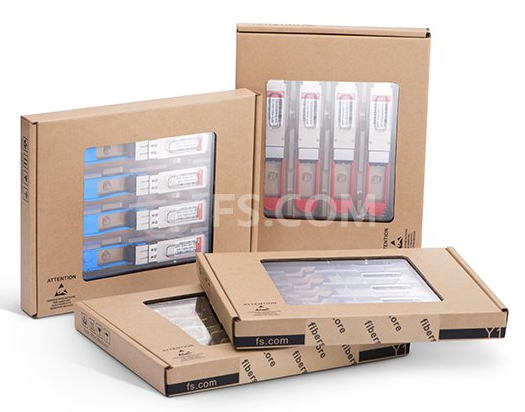High-density QSFP+ SR4 Transceiver Cabling Methods
With the increasing demand for higher speed in fiber optic communications, 40G network is widely deployed in today’s backbone transmission network. 40G QSFP+ SR4 transceivers, for short reach applications, can support distance of up to 150 m over OM4 multimode optical fiber. Inserted in switch, QSFP+ SR4 module utilizes a MTP/MPO interface for dual way transmission.
There are a lot of methods to connect QSFP+ SR4 transceivers to other devices by using different connectivity products. Besides, the cabling for 40G is relatively more difficult than that of 10G network, which requires more cables and space. Here are several high density QSFP+ SR4 transceiver cabling methods.
40G to 40G transmission is needed in a 40G fiber optic network. The following picture simply illustrates how 40G to 40G multimode transmission is being achieved by QSFP+ SR4 transceivers. Two QSFP+ SR4 modules interconnected with a MTP trunk cable are separately inserted into two switches. Thus two switches are linked successfully.

Of course, there are also other ways to achieve this connection. The more devices you use, the more complex it is to achieve connections because cable counts increase. As shown in the following figure, a 48-port 1U rack mount MTP fiber patch enclosure is used. Four 12-port MTP fiber adapter panels can be deployed in this standard 1U rack mount enclosure. With the help of this 48-port MTP fiber enclosure, cable management for 40G connections could be easier.

QSFP+ SR4 is a parallel fiber optic transceiver which uses four fibers for transmitting and four fibers for receiving at the same time. The 40G fiber optic signal can be separated into four 10G signals to meet the 40G to 10G transferring requirements. The fiber optic cable count will be increased at the 10G distribution end. Usually a breakout MTP-8LC harness cable is used. For better cable management, a 1U 96-fiber enclosure is recommended, which includes four HD MTP cassettes transferring MTP front the 40G end to LC at the 10G end. Four 10G-SR SFP+ modules, inserted in 10G switch/ports, can be connected to the corresponding LC ports on fiber optic enclosures to achieve the duplex transmission between 40G and 10G.
For higher cabling density, the above mentioned 48-port 1U rack mount MTP fiber patch enclosure is still being recommended, which can provide high density 40G MTP cabling environment. And additional MTP-8LC harness cables should be used for transferring signals between 40G and 10G.
Through the above analysis we can see that, QSFP+ SR4 transceivers can meet various cabling applications with different fiber products. Apart from the above-mentioned methods, there are also others way to build connections using QSFP+ SR4 modules and it will depend on the practical applications and cabling environments. All the related products for the above mentioned methods can be found in FS.COM.

